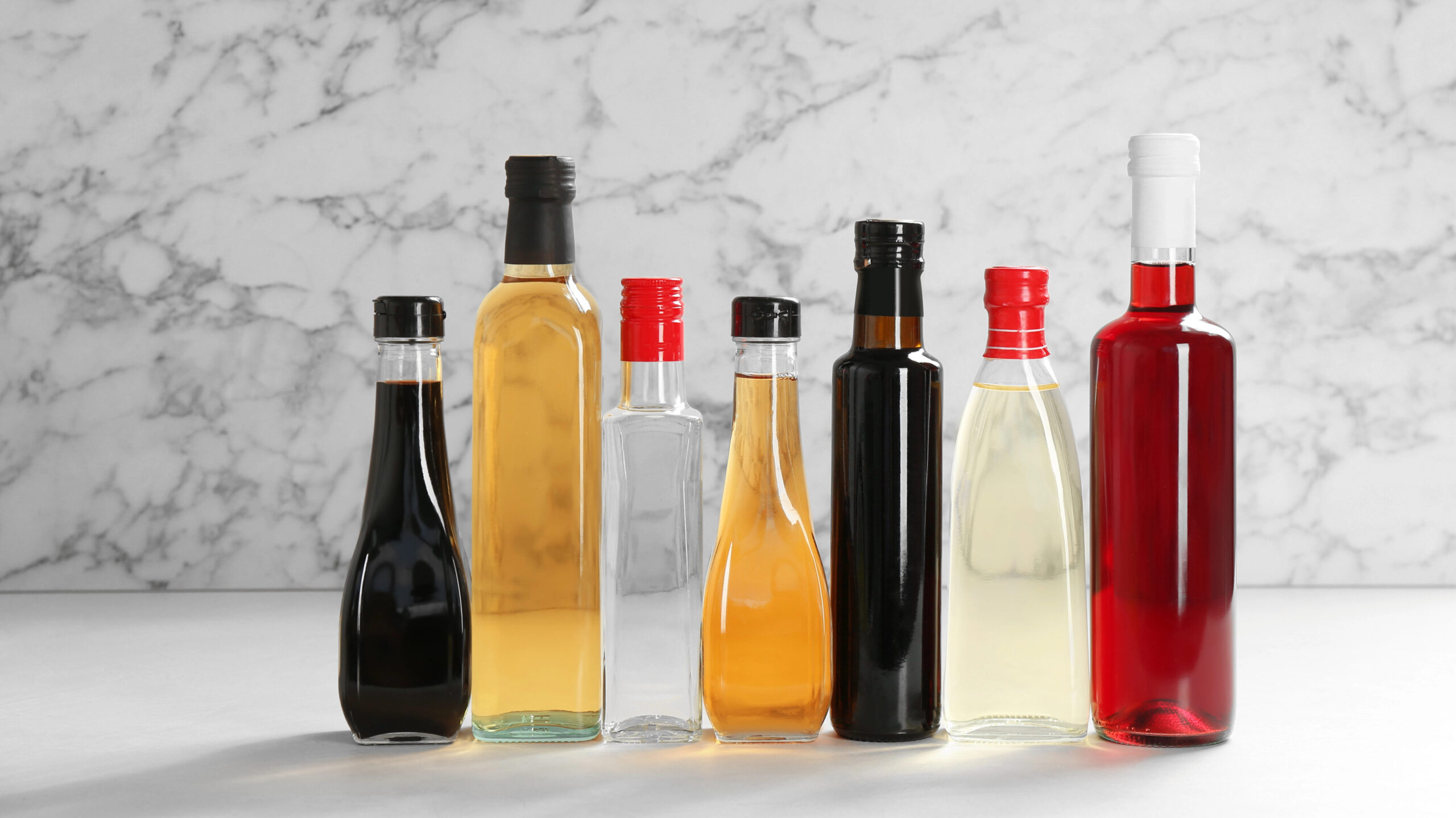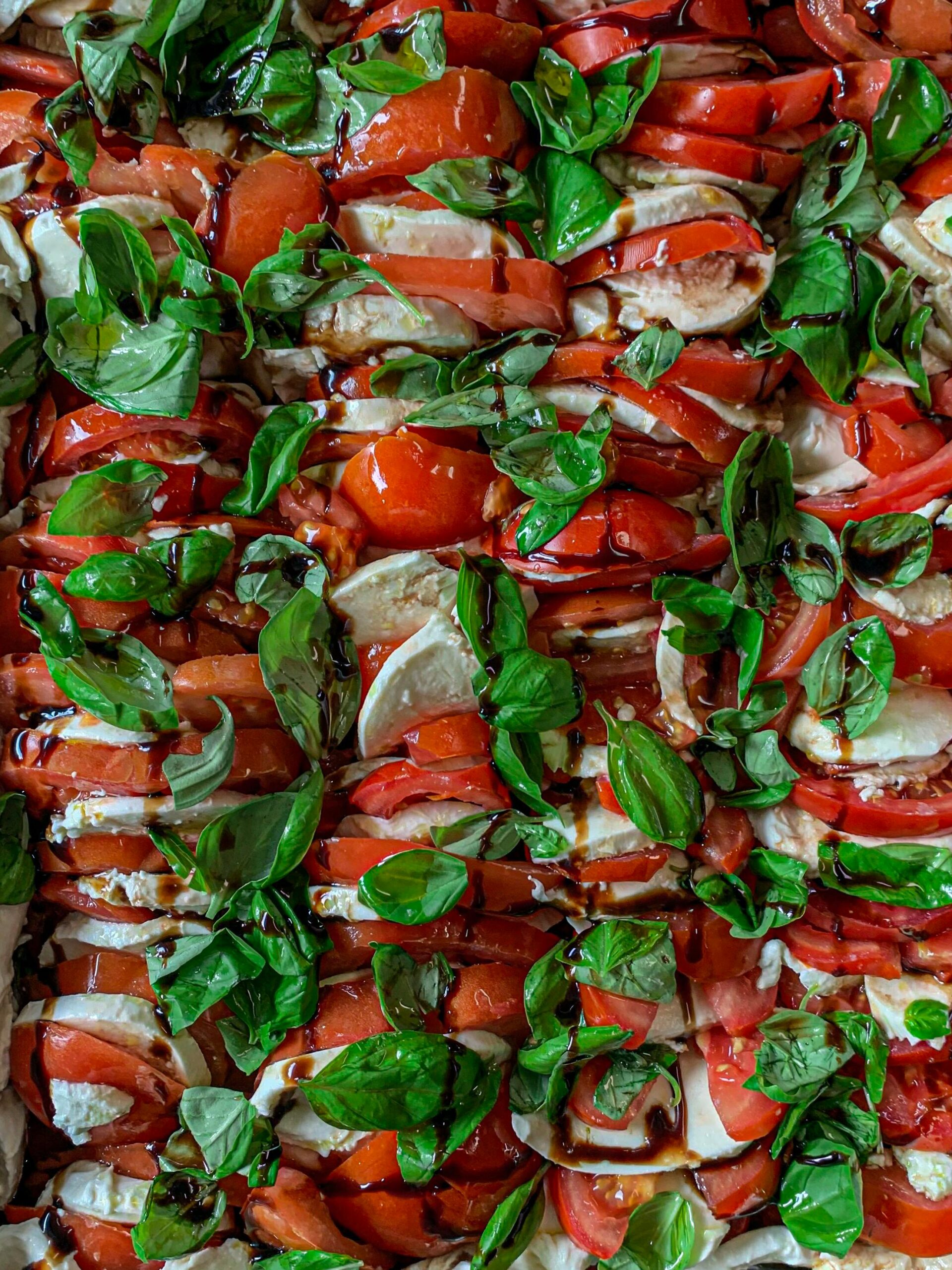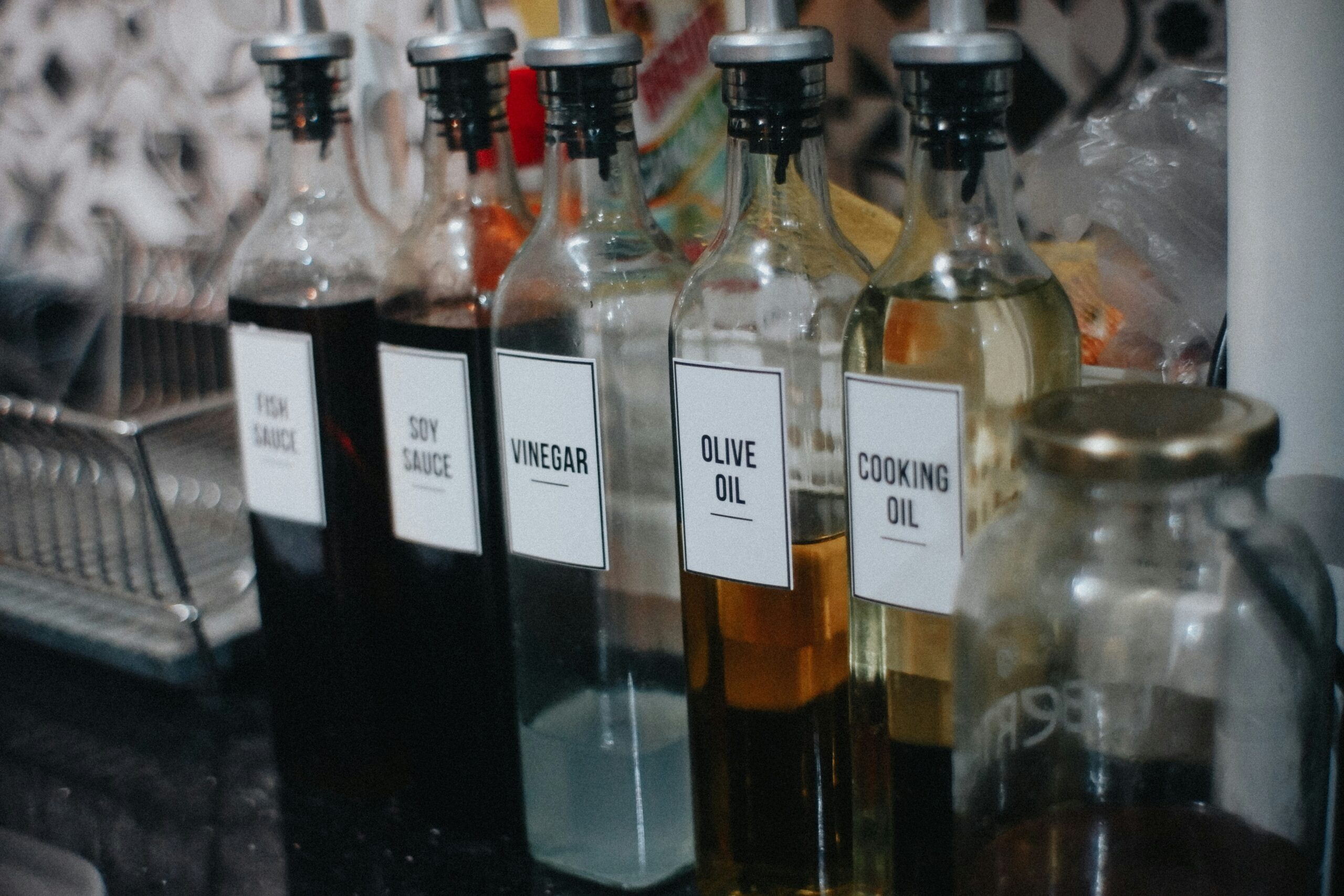Many people believe that all types of vinegar have the same properties and uses. Nothing could be further from the truth. Discover a handful of the more than 20 different vinegar varieties and how best to use them in recipes and everyday life.

Why types matter
Do you know the difference between balsamic and red wine vinegar, or apple cider and white vinegar? Some are great for salads, others work best for sauces and some are the right choice for pickling. Choose the wrong one and you can ruin a recipe faster than the science experiment you get when combining vinegar and baking soda.
When considering which cooking vinegars to use, it's important to understand how each can enhance different dishes based on their distinct flavors and acidity. Some vinegars are often connected to specific cuisines.
For instance, there is rice wine vinegar. You'll most often find it used in Asian dishes where it enhances a recipe, such as copycat slow cooker Panda Express General Tso Chicken. Similarly, balsamic vinegar, which originates in Italy and is made from grapes, pairs perfectly with traditional Italian dishes like Caprese salad.
Apple cider vinegar has fruity notes. It is ideal to use in certain vinegar-based coleslaws versus mayonnaise-based coleslaw because of how well the vinegar goes with cabbage. You can also make watermelon pickles with it.
Finally, perhaps the most common and cheapest type of vinegar is white vinegar. You can buy it in large jugs at warehouse clubs. While you might be tempted to use it in an oil-and-vinegar salad dressing, don't. Use balsamic or red wine vinegar instead and save the cheap white vinegar for household cleaning tasks.
How vinegar is made
If you've ever left a bottle of wine too long after you opened it and it has started to ferment, then you probably have a basic understanding of how you make vinegar. Interestingly, the word vinegar originated from the French phrase for sour wine — “vin aigre.”
Fun facts aside, you can't just let sour wine ferment naturally and expect to get a tasty vinegar. Just like feeding a sourdough starter, there are more steps you need to take.
The first step in making vinegar involves yeast consuming sugars in the base you use to create vinegar. The second step is to introduce specific and safe-for-consumption bacteria to cause acetic fermentation. The sugar source you use in the first step will relate directly to the kind of vinegar you want to make.
As mentioned earlier, balsamic vinegar originates from grapes. Apple cider vinegar really does start with apple cider. In fact, according to Cider Scene magazine, this vinegar goes through the same process that creates hard cider. But like with other vinegars, there is that second step that, in this case, transforms the apple cider from alcoholic to acidic.
“I love using fruit vinegars for quick salad dressings. You don’t even need to mix them, just sprinkle on the vinegar and some olive oil for a quick blast of flavor,” said Renee Gardner of Ruthybelle Recipes. “Two of my favorites are peach champagne vinegar and fig balsamic vinegar.”
Different vinegar types
Did you know that there are vinegars made from French sparkling wine, also known as champagne? And that some vinegars contain unexpected flavors like chocolate? Amanda Luhn of Knoxville Backyard & Beyond loves to use chocolate balsamic vinegar on a strawberry salad. “It is a fun addition that the kids love,” she said.
Many other ingredients serve as the base for vinegars beyond chocolate and champagne. Here are some of the most common types of vinegar, their origins and how to use them — for cooking or, in one instance, cleaning.

Distilled white vinegar
Believe it or not, distilled white vinegar starts as a grain alcohol like you might find in a backyard still. After fermentation, the makers dilute it with water. You might use distilled white vinegar for pickling vegetables or as a household cleaning agent. Just don't use it on stone surfaces because the high-acidic content will ruin them.
Balsamic vinegar
Made with red and white grapes exclusive to Italy, balsamic vinegar is aged in small wooden barrels similar to wine. Some balsamic varieties take 12-25 years to age, which is why this vinegar ends up dark and almost like a syrup. Most people serve this sweet and tangy vinegar on fruits and vegetables or use it in a marinade.
Rice wine vinegar
It's important to understand that though some people refer to sake as rice wine, it is not a wine like chardonnay or chianti. Instead, sake is a fermented rice-based liquid that is the basis for rice wine vinegar. Like other vinegars, it goes from a pure alcoholic beverage to a vinegar by adding acetic acid. There are white rice and black rice vinegars that you can use in Asian dishes, such as sushi rice.
Malt vinegar
If you've ever traveled to the United Kingdom and ordered fish and chips, chances are your dish came with malt vinegar, the traditional condiment sidekick. Malt vinegar comes from malt barley, the precursor to beer. People like malt vinegar with fried food because the sharp flavor cuts through the fattiness of oil frying.
Red wine vinegar
Not surprisingly, red wine vinegar is made from red wine. However, the kind of wine a vinegar producer produces depends on where they are located and what kind of red wine they can access. You might find red wine vinegar made from familiar wine types such as pinot noir, Bordeaux, cabernet or merlot.
Many people choose balsamic or red wine vinegar when making a vinaigrette dressing. Red wine vinegar is Amanda Luhn’s preferred ingredient when she wants a bit of tang in a homemade dressing. “It works great for something like pasta salad,” she said.

Vinegar is far more diverse than most people realize. Sure, it might have originated as sour wine, but these days you can find so many types of vinegar at the grocery store and dozens more online. The possibilities are endless for working vinegar into your next recipe.
Leah Ingram thinks that balsamic vinegar on a watermelon and feta salad is the epitome of summer dining. You can find recipes on her blog, Bagels and Lasagna.
This article originally appeared on Food Drink Life.
